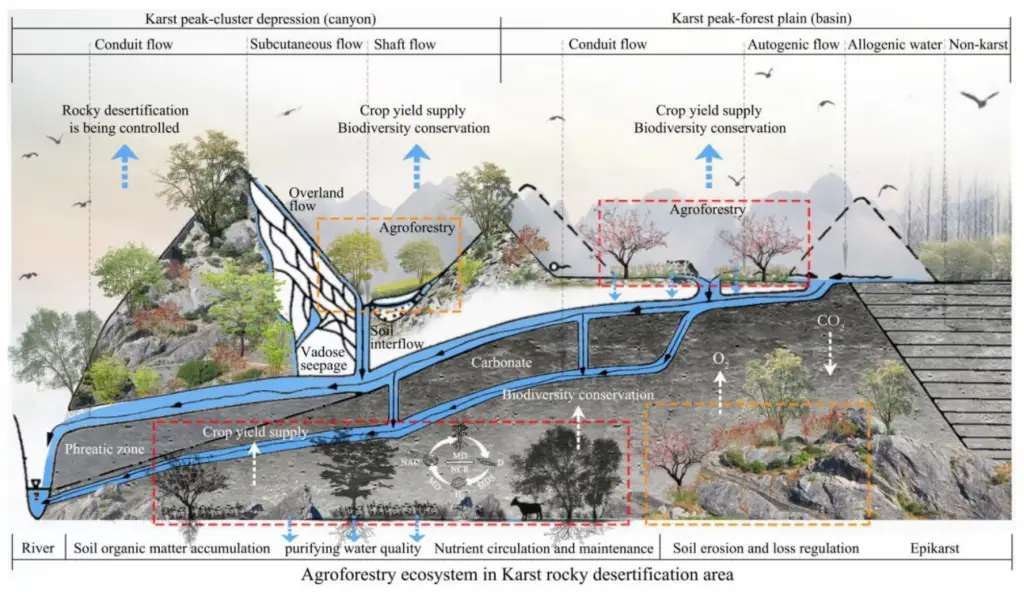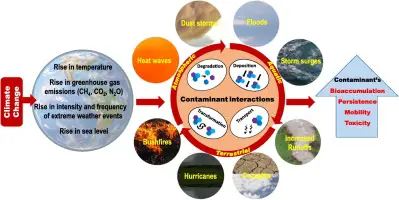The stages of carrot growth include germination, seedling growth, vegetative growth, and reproductive growth. Carrot seeds are sown during early spring or late fall, and after germination, the seedlings start to grow.
As the seedlings continue to grow, they enter the vegetative stage where the carrot tops grow larger and the root starts to develop. Finally, during the reproductive stage, the carrot plant produces flowers and seeds. It is important to understand these stages in order to successfully grow and harvest carrots.
Carrots are a popular vegetable that can be grown in home gardens or on a larger scale. This article will provide an overview of the different stages of carrot growth, including pictures to help you visualize each stage. Whether you’re a beginner or an experienced gardener, understanding the growth process of carrots can help you cultivate healthy and abundant crops. So, let’s dive into the stages of carrot growth and learn how these tasty vegetables develop from seeds to harvest.

1. Germination Stage
The germination stage is the first phase of carrot growth, where the seeds sprout and develop into seedlings. This crucial stage sets the foundation for the plant’s growth and future yield.
Overview Of Carrot Seed Germination Process:
- Carrot seed germination is the first stage in the life cycle of a carrot plant.
- It refers to the process in which a seed transforms into a seedling.
- Germination begins when a carrot seed absorbs water and swells, eventually cracking open and allowing the root to emerge.
Factors Affecting Carrot Seed Germination:
- Adequate moisture: Proper watering is essential to ensure the seeds receive the necessary moisture for germination.
- Temperature: Carrot seeds germinate best in cool soil temperatures between 60°f and 70°f (15°c and 21°c).
- Light: Carrot seeds do not require light for germination. In fact, they prefer darkness.
- Soil conditions: Well-drained and loose soil with a ph level between 6.0 and 6.8 is ideal for carrot seed germination.
Importance Of Proper Soil Conditions For Germination:
- Proper soil conditions are crucial for carrot seed germination.
- Well-drained soil ensures that excess water does not accumulate around the seeds, which can lead to rotting.
- Loose soil allows for easy root penetration and growth.
- The right ph level promotes nutrient availability and supports healthy seedling development.
Duration Of The Germination Stage:
- The germination stage for carrot seeds typically lasts around 10 to 14 days.
- However, the duration may vary depending on factors like temperature, moisture levels, and seed quality.
- It’s important to be patient during this stage and maintain optimal conditions for successful germination.
Key Characteristics And Appearance Of Carrot Seedlings:
- Carrot seedlings initially appear as delicate, thread-like shoots emerging from the soil.
- As they grow, the leaves develop into feathery, fern-like structures with a bright green color.
- The first true leaves of carrot seedlings differ from the initial cotyledons, showcasing the characteristic shape of carrot foliage.
Overall, understanding the germination stage of carrot growth is essential for successful carrot cultivation. By providing the right conditions and monitoring the development of seedlings, gardeners can set a strong foundation for the growth and eventual harvest of healthy carrots.
2. Vegetative Stage
During the vegetative stage of carrot growth, the plant focuses on developing its leaves and roots. This stage is crucial for establishing a strong foundation for the plant’s overall growth and future development.
Growth And Development Of The Carrot Plant:
The vegetative stage is a crucial phase in the growth and development of the carrot plant. During this stage, the plant focuses on leaf production and root development to establish a sturdy foundation for future growth. Here are some key points to understand about the vegetative stage of carrot growth:
- Leaf production and expansion:
- Carrot plants start by producing a cluster of leaves called the rosette. These leaves emerge from the center of the plant and gradually expand outward.
- The main function of the leaves during the vegetative stage is to capture sunlight and convert it into energy through photosynthesis.
- As the leaves grow, they develop a vibrant green color and mature, providing the necessary nutrients for the plant’s growth.
- Root development during the vegetative stage:
- The carrot plant’s primary focus during the vegetative stage is on root development.
- The young roots grow downward into the soil, exploring and absorbing nutrients and water.
- Carrots require deep, loose soil for adequate root development. It helps the roots penetrate the ground easily and prevents stunting of growth.
- Nutrient requirements for healthy plant growth:
- During the vegetative stage, carrot plants have specific nutrient requirements to ensure optimal growth.
- Nitrogen is essential for leaf production, while phosphorus and potassium promote root development and overall plant health.
- It is crucial to provide a well-balanced fertilizer or compost that meets these nutrient requirements to support healthy vegetative growth.
Tips For Promoting Optimal Vegetative Growth:
Now that you understand the importance of the vegetative stage in carrot growth, here are some tips to promote optimal vegetative growth:
- Choose the right location: Ensure that your carrot plants receive full sun exposure for at least six hours a day. This promotes optimal leaf production and overall plant vigor.
- Prepare the soil: Prior to planting, prepare the soil by loosening it to a depth of at least 12 inches. This allows the young roots to penetrate easily and encourages healthy development.
- Provide adequate watering: Carrot plants require consistent moisture to support vigorous leaf growth and root development. Water deeply, ensuring the soil remains evenly moist but not waterlogged.
- Mulch to conserve moisture: Applying a layer of organic mulch around the base of carrot plants helps to conserve moisture in the soil, reduce weed competition, and maintain an even soil temperature.
- Fertilize appropriately: Use a balanced fertilizer or compost rich in nitrogen, phosphorus, and potassium to meet the plant’s nutrient requirements. Follow the recommended application rates for optimal results.
By following these tips, you can ensure that your carrot plants go through a robust vegetative stage, setting the stage for fruitful growth in the future stages.
3. Reproductive Stage
The reproductive stage is an essential phase in the growth of carrots. Pictures of this stage showcase the growth and development of carrot flowers, which ultimately lead to seed production. This stage is crucial for the continuation of the carrot plant’s life cycle.
Transition From Vegetative To Reproductive Growth:
- Carrots undergo a transition from vegetative to reproductive growth when they reach a certain age and environmental conditions are favorable. This transition marks an important stage in their life cycle.
- At this stage, the carrot plant shifts its focus from leaf and root growth to flower and seed production.
- The transition is triggered by changes in hormone levels within the plant, specifically an increase in gibberellin production.
- As a result of this transition, the plant begins to develop a flower stalk and prepare for the process of flowering and pollination.
Formation Of The Carrot Flower Stalk:
- Once the transition to reproductive growth occurs, the carrot plant starts forming a flower stalk.
- The flower stalk, also known as the umbel, emerges from the center of the plant and grows upward.
- It is composed of multiple individual flowers, each attached to a central stem.
- The formation of the flower stalk signals that the plant is getting ready for the next stage of its reproductive process.
Flowering And Pollination Process:
- The flowering stage is a crucial period for carrot plants, as it allows for pollination to occur.
- Carrot flowers are typically white or light-colored and have a unique shape, with a central disc surrounded by petals.
- During this stage, insects, especially bees, play a vital role in the pollination process by transferring pollen from one flower to another.
- Successful pollination is necessary for the formation of seeds and the continuation of the carrot plant’s life cycle.
Seed Production And Maturation:
- After successful pollination, the fertilized flowers go through a maturation process to develop into seeds.
- The ovaries of the flowers begin to swell and form seed pods, which gradually change color from green to brown or black as they mature.
- Inside the seed pods, the seeds develop and mature, becoming viable for future growth.
- It is important to allow the seeds to fully mature on the plant before harvesting for seed saving, as immature seeds may not germinate properly.
Harvesting Carrots At The Right Stage For Seed Saving:
- When it comes to seed saving from carrots, it is crucial to harvest them at the right stage of maturity.
- Carrots intended for seed saving should be left in the ground until they have completed their full life cycle, including the flowering and seed maturation stages.
- The seeds can be harvested once the seed pods have turned completely brown or black and are dry to the touch.
- Care should be taken during harvesting to ensure the seeds are collected without any damage, as this can affect their viability.
Remember, understanding the different stages of carrot growth, specifically the reproductive stage, is essential for successful seed saving and ensuring a continuous supply of delicious carrots year after year.
Can the Growth Stages of Carrots be Compared to the Growth of Peanuts?
The growth stages of carrots cannot be compared to the growth of peanuts. Carrots are root vegetables that grow in the ground, while peanuts grow in trees. These two plants have completely different growth habits and cannot be equated in terms of their growth stages.
Frequently Asked Questions For Stages Of Carrot Growth Pictures
What Are The Stages Of Carrots Growing?
The ground, carrots can continue to grow and develop for up to 120 days. During the first stage, germination, the seeds sprout and roots start forming. In the second stage, seedling growth, the plant produces a small leafy shoot. Vegetative growth is the third stage, characterized by the growth of a larger leafy plant and the development of the carrot root.
Finally, in the fourth stage, reproductive growth, the plant starts to flower and produce seeds. It is important to harvest carrots at the right time to ensure optimal flavor and texture.
How Long Does It Take For A Carrot To Grow?
Unharvested, carrots can continue to grow and reach their full size in about 80-90 days. Germination takes about 7-14 days, during which the seedling emerges from the soil. Seedling growth occurs in the next 2-3 weeks, as the plant develops its first leaves and roots.
Vegetative growth follows, with the carrot plant growing stems, leaves, and forming the carrot root. This stage lasts for 6-8 weeks. Reproductive growth happens in the final stage, where the plant focuses its energy on flowering and producing seeds. Carrots are biennial plants, meaning they flower and set seeds in their second year of growth.
However, most gardeners harvest carrots during the vegetative growth stage when the roots are mature and the desired size. The exact time it takes for a carrot to grow can vary depending on the variety, growing conditions, and climate.
How Do You Know When Carrots Are Ready To Pick?
If you’re wondering when to pick carrots, here’s an easy guide: 1. Germination: carrot seeds are planted in early spring or late winter. 2. Seedling growth: carrots sprout within the first few weeks after planting. 3. Vegetative growth: the leaves of the carrot plant grow larger, and the roots develop.
4. Reproductive growth: the carrots are ready for harvest in 50-70 days, depending on the variety. To check if the carrots are ready to pick, gently pull one out of the soil. If it’s the desired size and shape, you can start harvesting.
Carrots are usually tastier when they reach a diameter of about 1 inch. However, different varieties may have different characteristics, so refer to the seed packet or the information provided by the seed supplier for specific harvesting guidelines. Enjoy your freshly harvested carrots!
What Does A Bolted Carrot Look Like?
Ground for an extended period, carrots can bolt. A bolted carrot has a distinctive appearance. It will have a long, thick, and woody stem that grows from the center of the carrot. The stem usually extends beyond the foliage and produces flowers or small white bulbils.
The carrot itself may become smaller and misshapen, with a more bitter taste compared to non-bolted carrots. Bolted carrots are not ideal for consumption as they may have a compromised texture and flavor. It is best to harvest carrots before they bolt to ensure optimal taste and quality.
Conclusion
Carrots will continue to grow and can reach maturity in about 80-100 days. During the germination stage, the carrot seeds start to sprout and develop roots. In the seedling growth stage, the plants begin to produce leaves and establish a strong root system.
As the carrots enter the vegetative growth stage, they start to develop their characteristic orange color and increase in size. Finally, in the reproductive growth stage, the carrots produce flowers and seeds. Understanding the stages of carrot growth is essential for successful cultivation.
By knowing when to plant, care for, and harvest your carrots, you can ensure a bountiful harvest. Whether you’re a beginner or an experienced gardener, these stages provide valuable insights into the life cycle of carrots. From the moment the seed is sown to the time it becomes a fully grown vegetable, the journey of a carrot is fascinating.
By following the stages of its growth, you can witness the transformation and appreciate the effort it takes to bring this nutritious root vegetable to your table. So, get your hands dirty, plant some carrot seeds, and enjoy the rewarding experience of watching them grow through these stages of carrot growth.


 Dr Ahsanur Rahman, PHD
Dr Ahsanur Rahman, PHD



